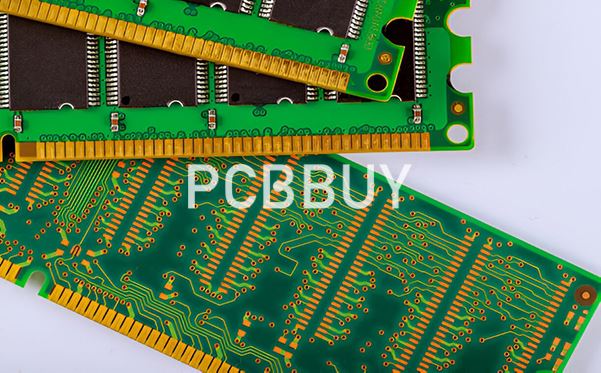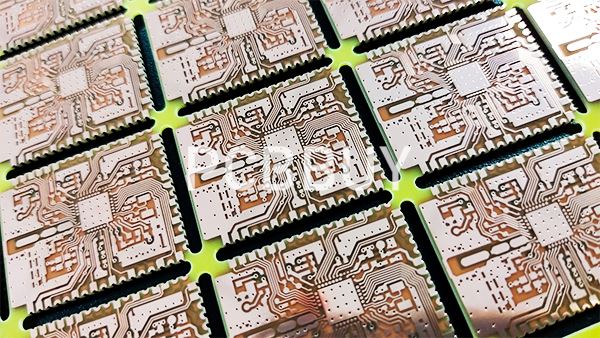PCB Tooling Hole Placement
By:PCBBUY 08/23/2021 09:12

Tooling holes are probably the simplest feature on a PCB, there are some basic guidelines that should be followed when determining where to place tooling holes. Once you consult with your manufacturer on their panel and tooling requirements, or if you’ve decided to make your own panel, tooling holes can be placed with the standard pad and hole features in your PCB design software.
In this passage, we will provide that how this works and some best practices for tooling holes in your design. Please check and read the content below to learn more information.

What is the definition of PCB tooling hole?
PCB tooling holes, or mounting holes, are circular openings made at the edge of a PCB. Tooling holes are non-plated, and they are used by machines to hold the PCB down for alignment. During the fabrication process, it’s imperative that the PCB be kept still and properly aligned for drilling. If the PCB is not kept still, it will be impossible to deliver precisely-drilled holes.
When the fabricated PCB is sent for assembly, the tooling holes will be needed again if there are SMD components in the design. The machines will use the tooling holes for stencil alignment when applying solder paste and placing SMD components with the pick-and-place machines.
It is important to note that PCB tooling holes should not be confused with fiducial markers. Fiducial markers are pads that are created on the PCB quote to provide a reference for optical pick-and-place machines. However, both are equally important when designing a PCB with SMD components.
What are the considerations of PCB tooling hole?
When adding tooling holes, please keep the following in mind:
1. Two or three tooling holes should be added on the PCB, they should be placed in opposite corners of the PCB and as far apart from one another as practical.
2. Tooling holes should be 1.152mm (45.4mil) round non-plated holes with 0.148mm solder mask expansion.
3. Tooling holes are only required for SMT assembly orders.
4. Please try to add tooling holes on empty space and keep them away from traces. If there is no enough room, you can add them to the copper area.

What is the importance of PCB tooling hole?
Tooling holes used for attaching hardware, also known as “mounting holes,” can be associated with component footprint patterns or isolated by themselves.
PCB footprint creation guidelines In addition to having leads or pins that solder to the circuit board, several components have mounting hardware for added physical support. Connectors often bolt to the board to protect their solder connections from the stress of being plugged and unplugged from their cable. These holes may also need to connect the mounting hardware to electrical ground or conduct heat through the board to be dispersed on interior plane layers. Lastly, to mount a circuit board into its system, mounting hardware or brackets are often attached to the board using isolated holes.
PCB tooling holes can be put into the board to assist with the different phases of manufacturing. These holes guide the board through its assembly processes, such as solder reflow, wave solder, and automated optical inspection (AOI). Tooling holes are also used during the testing process if the board needs additional test fixture support. However, most of the tooling holes for production are added to the PCB contract manufacturer’s panel based on their requirements instead of the board.

How to work with PCB tooling hole?
Tooling holes will probably be one of the simplest features in your PCB, but they are critical for fabrication and assembly. There are three main points to consider when determining where and how to place tooling holes in your PCB:
· Placement during panelization
· Size and plating
· Placement with fiducials
How to process the PCB tooling hole?
Calculate the size of PCB tooling hole
Usually, common sizes like 1mm, 1.5mm, and 2mm are acceptable tooling hole sizes for most manufacturers. If you’re unsure, make sure to consult with your PCB manufacturer. For uniformity, you’ll want to stick with a common size for all tooling holes on a PCB.
Besides size, you’ll also need to ensure that the PCB tooling hole isn’t plated. A non-plated hole is better in terms of accuracy compared to a plated one. Also, ensure that there is a solder mask expansion that slightly extends over the hole.
Place the PCB tooling hole
Placing tooling holes is simple: just use the “place pad” or “place hole” feature in your design software. Great PCB CAD tools will let you define specific holes as plated or non-plated; simply set the hole to non-plated and set the required diameter, and you’re finished with tooling hole design. PCB design software like Altium Designer makes this easy with a complete set of CAD tools for PCB design and layout.
Industry Category











